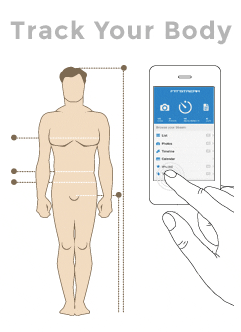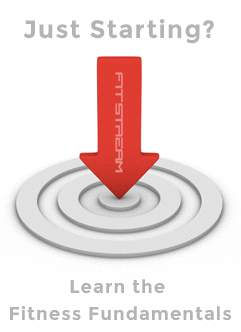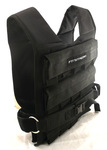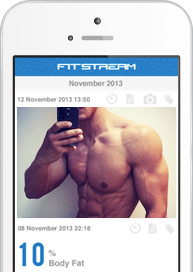
Foam rollers didn't used to be a sexy topic in the world of health and fitness. After all, who can say that they actually enjoy the often neglected warm up and stretching routine?
We all know that stretching is good for us but most people want to get down to their workout and get out, and as a result many of us are simply lacking in flexibility and left prone to injury. Combine this with being hunched over desks much of the day and we also have some pretty poor postural issues that will come back to haunt us in later life.
However, there's a change happening. No longer are foam rollers the friends of only physio's and rehabber's, but they're now used for their training preparation and recovery properties, as well as their rehabilitative effects.
We now realise that being fit is more than just about lifting heavy weights or getting the heart pumping. Whilst these factors are stimulus for change it's just as important to focus on enabling change - combining a good diet with effective rest and recovery techniques.
Unless you can afford a personal massage therapist then buying a foam roller is a no-brainer. It might not look as good in a skirt but it's cheap, available 24-7 and your body will thank you for it.
Who should be foam rolling?
Foam rolling benefits everyone regardless of physical activity.

Not many of us can afford our own massage therapist but if you exercise regularly (particularly weight training) or have poor posture then a quality foam roller is one of the best (and cheapest) investments you can make for your body. Even if you aren't training heavy but spending too much time sitting down, a foam roller will help relieve muscular tension and any tightness in the muscles.
Many of us suffer from "trigger points", little muscle knots that can cause problems like aches and pains which eventually lead to bigger, acute injuries. Using a foam roller you should be able to feel these trigger points as you roll over the muscle and the applied pressure eases them out, releasing the tension.
The benefits and uses of a foam roller
A foam roller offers soft-tissue work for the general population - replicating the benefits of human-specialist therapy at a low cost. Using a foam roller is often referred to as "self myofascial release" (essentially self-massage).
Foam rollers can be used to:
- Break down knots / adhesions / scar tissue between muscles to help improve muscle length, flexibility and mobility.
- Promote blood flow to target areas prior to / post workout.
- Prepare for a workout with stretching and warm-up exercises
- Quicken workout recovery times and reduce muscle soreness
- Self-massage and improve muscle alignment
- Train the core body and balance skills
- Improve posture
- Relieve muscular tension
Science aside, most people report that foam rolling just seems to make you more aware of your body and mentally prepared for a workout.
Foam roller exercises and techniques
Exercising with a foam roller is very simple to learn. Essentially, whilst supporting your body, place the target muscle on top of the foam roller and move yourself over it. The pressure applied by your own bodyweight presses out the soft-tissue, releasing tension and stimulating blood flow whilst ironing out any sticking points.
Foam rolling may hurt slightly and you might feel your back crack or even hear popping sounds, but that's normal. You're simply limbering up what is probably an overly tight body! Make sure you pay particular attention to any areas that feel tight or sore and roll more slowly over those parts until the pain diminishes, before moving on to the next area.
There are no hard-and-fast rules for foam rolling, but you're generally encouraged to simply roll out until the pain subsides. After exercising with the foam roller you should feel much more limber and loose.
A foam roller is commonly used along with other soft-tissue therapies such as trigger point therapy (using small dense balls to roll on for more focused application to the tissue).
Below we show you some sample foam roller exercises, but for a complete list please see the flexibility, stretching and mobility exercise section of the Fitstream Exercise Directory.
Hamstring Foam Roll
The hamstring muscle group is one of the easiest to workout with a foam roller, and the Hamstring Roll is a great exercise for loosening the hamstrings and working out any tight spots of muscle.

- Begin by sitting up, supporting your bodyweight with your hands and the foam roller under your thighs.
- Slowly roll back and forth from glute to knee, pausing on any tight spots in the muscle.
- Move from side-to-side to work the entire muscle.
Note: As the hamstrings have a much bigger surface area than muscles like the calves your bodyweight will be distributed and this may not have the same effect. To counter this simply train a leg at a time, supporting one leg on top of another to emphasise one side. This technique can be used with most muscle groups to control the amount of pressure exerted on the muscle by the foam roller.
For a full guide to this exercise please see the Hamstring Foam Roll in the exercise database.
Thoracic Spine Extension with Foam Roller
The thoracic spine is one of the five segments of the spinal column, encompassing the shoulder and chest area and can be kept in good shape using a foam roller. It's an important exercise that is used to avoid the common slumped shoulders and rounded back look by improving your thoracic spine mobility.
Neglecting spinal health leads to poor posture which looks unsightly, and will eventually lead to lower back or neck pain and acute injury.

- Place foam roller under upper back / thoracic spine.
- Keep knees bent, feet flat on the ground and hands behind head with elbows close together.
- Lower head to floor and try to wrap yourself around the foam roller, extending the thoracic spine.
- Roll, slowly up and down the vertebrae, pausing on any painful parts (do not roll the neck or lower back, focussing solely on the thoracic spine).
For a full guide to this exercise please see the Thoracic Spine Extension using a Foam Roller in the exercise database.
Foam roller safety
Foam rollers are available in varying densities and the type used should be appropriate to your fitness level, muscle density and body weight. You must always use the roller in a controlled, sensible manner.
Whilst foam rolling can border on painful it's important to distinguish between a moderate level of discomfort brought about by releasing tension in the muscles and a potential injury waiting to happen.
Note: Foam rolling should never cause bruising and ultimately, after training you should feel better for it and not worse.
Pre-workout / warm-up
Foam rolling prior to a workout is a good way to warm-up the body and limber up the muscles in preparation for intense training as the roll helps to decrease muscles density.
We recommend allowing 5-10 minutes of soft-tissue work at the beginning of a workout prior to a full warm-up.
Post-workout / rest and recovery
Foam rollers are not just for warm-up routines before a workout but can be used for recovery from strenuous training and increase blood flow to target muscles.
Rollers can be used for 5-10 minutes on non training days to help speed up recovery time and maintain soft tissue health.
Check out this foam roller exercise video provided by Eric Cressey for an excellent overview -
Summary to foam roller training
To summarise the points in this article:
- Roll the entire length of the muscle
- Stop and hold on tender areas until pain subsides, then continue rolling.
- The more you roll the better, preferably daily, although 2 or 3 sessions per week will see improvements.
- Remember that foam rolling is an injury preventative measure as well as rehabilitative so you shouldn't reach for it only when things start to hurt.
![]()
Buying a foam roller
Foam rollers are relatively cheap but can vary in quality and features.
Ensure that you buy a quality, high-density foam roller that will retain its shape with prolonged use and has a non-slip surface.
Foam rollers come in varying lengths and circumferences and as half, or full rolls.
Visit the Fitstream Store for recommended foam rollers.










